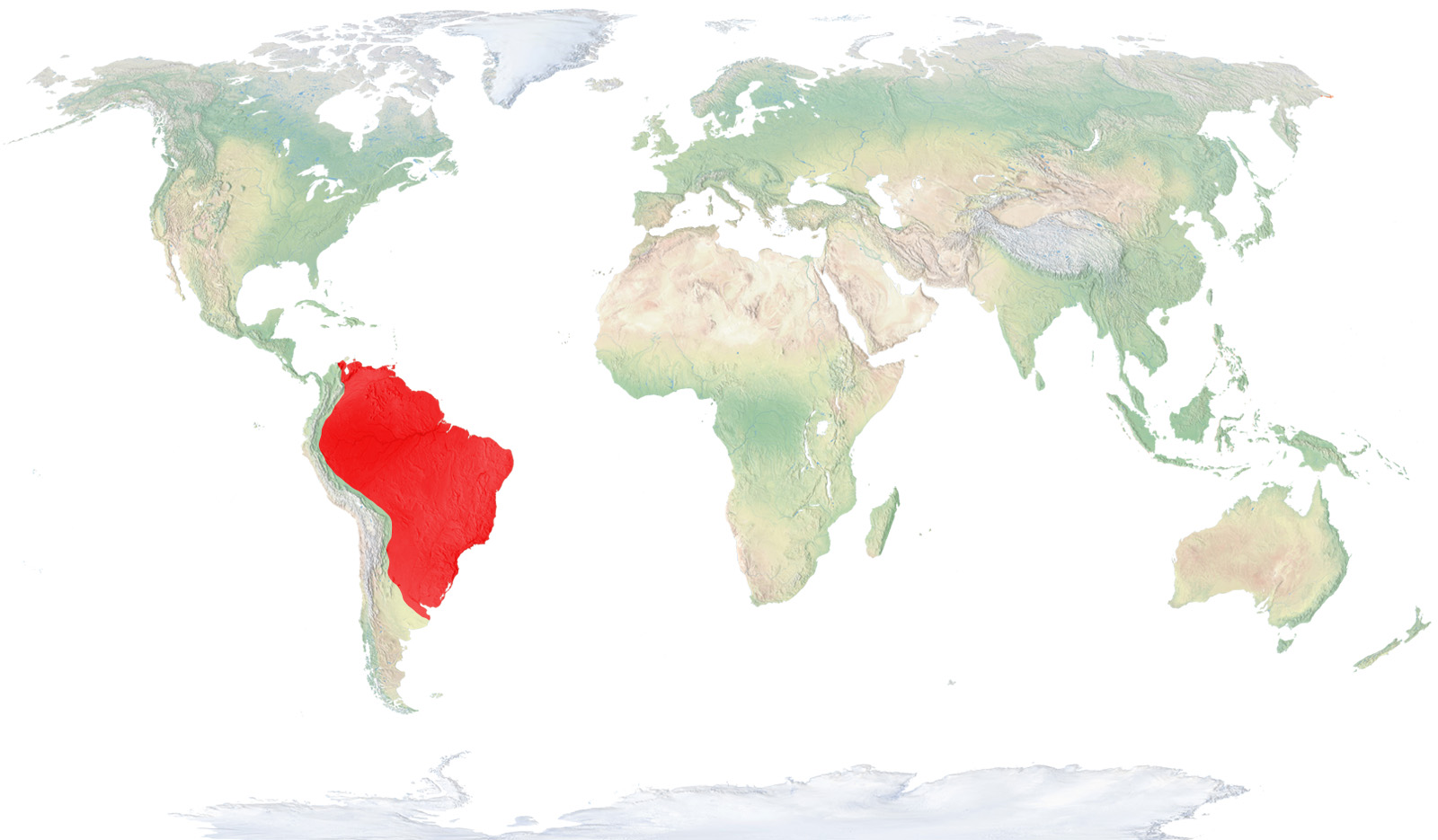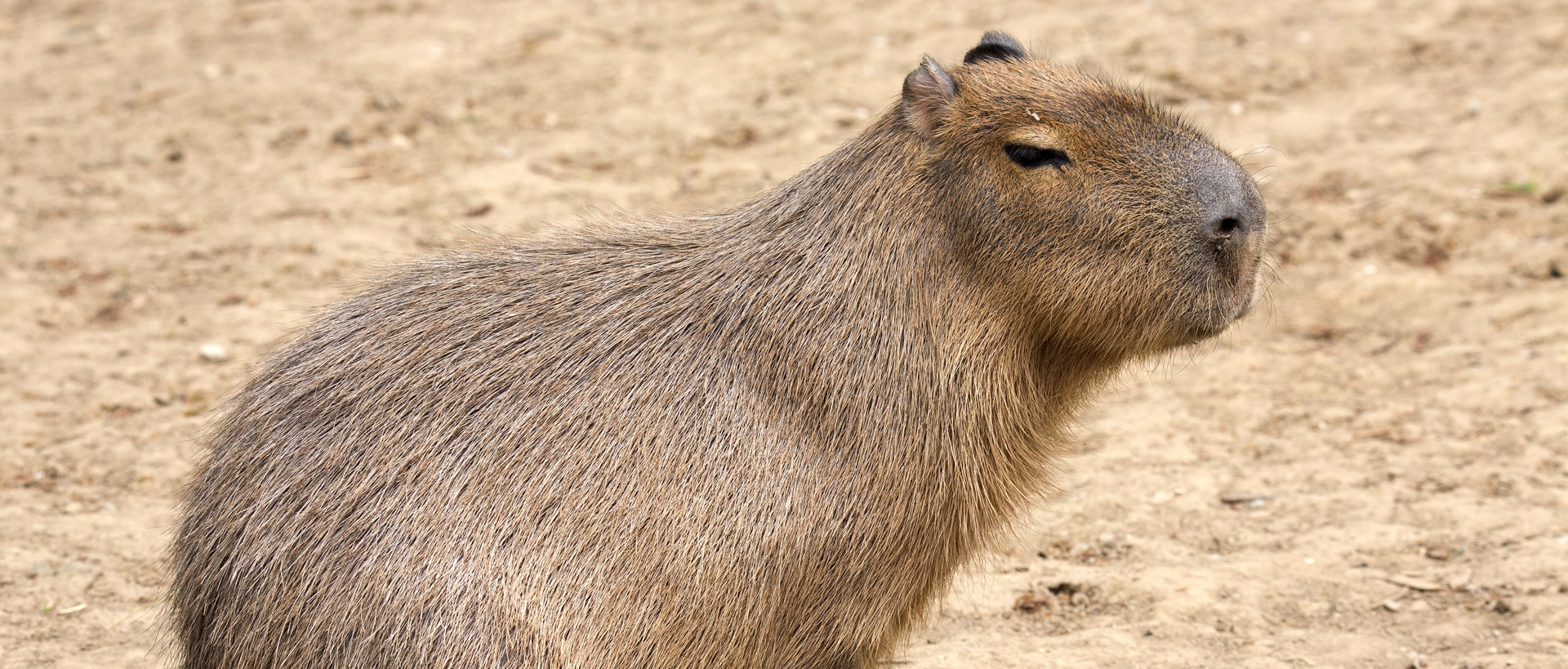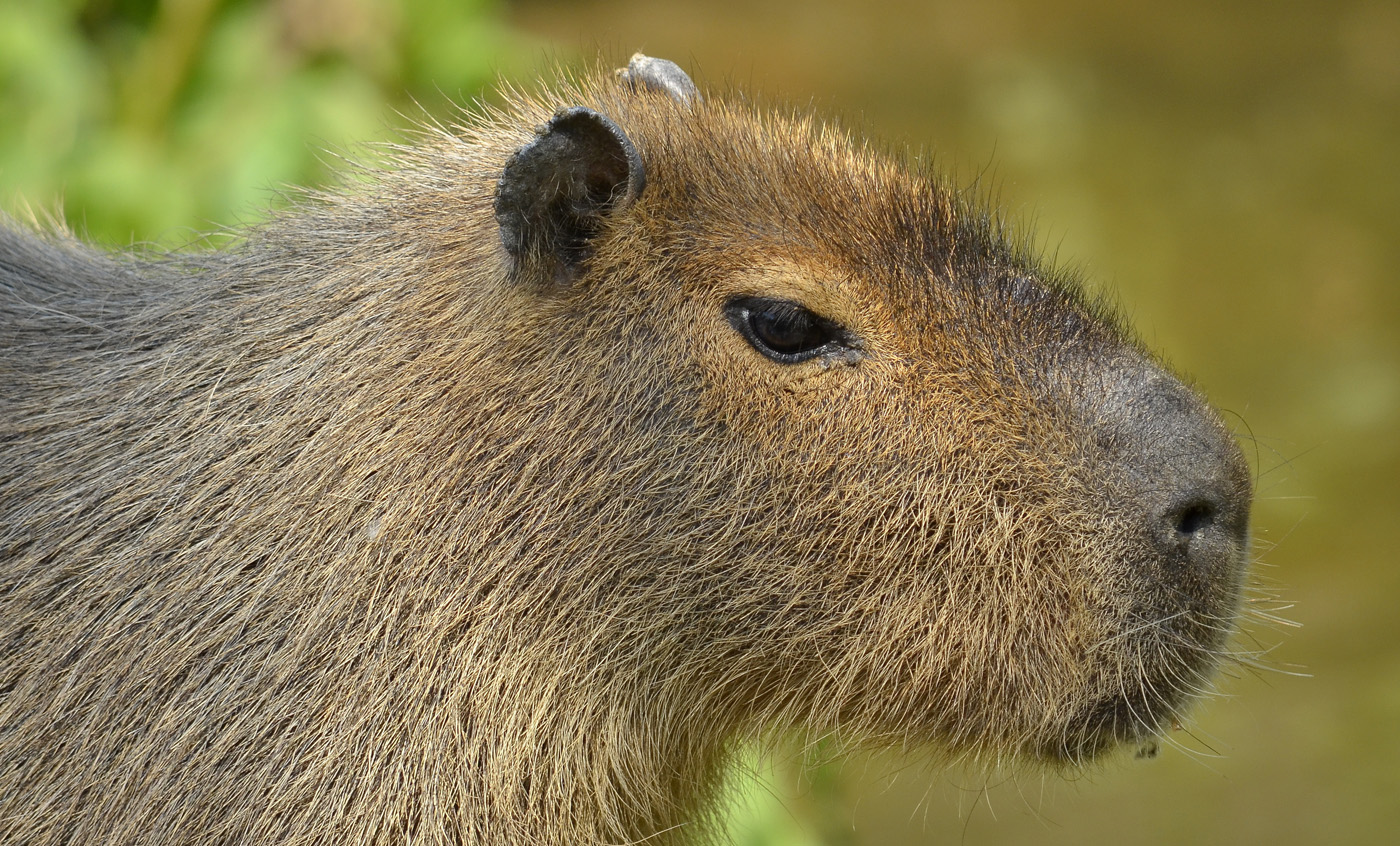Capybara
This is the largest rodent in existence, as it reaches over half a metre in height and can weigh up to 65 kgs. It inhabits the shores of tropical swamps, lakes and rivers in most of South America.
Well-adapted to living in the water, it is a good swimmer and always turns to the water to find shelter from its enemies. It can stay underwater for a long time, if necessary.
Natural habit
Northern South America: from Colombia, Venezuela and the Guyanas to Uruguay and northern Argentina.

- Distribution / Resident
- Breeding
- Wintering
- Subspecies
Risk level
- Extint
- Extint in the wild
- Critically endangered
- In Danger
- Vulnerable
- Near threatened
- Minor concern
- Insufficient data
- Not evaluated
Taxonomy
Physical characteristics
Biology
Reproduction
Biology
This is the largest rodent in the world. It has a thick body, a blunt muzzle, four short legs, with the rear legs slightly longer than the forelegs, thick toes that look like hooves, and no tail. The front feet have four toes and the rear feet three, all joined by interdigital webbing. The dentition is typical of rodents, with two incisors, two pre-molars and three molars, without roots and continuously growing, and a large space free of teeth called the diastema between the incisors and the pre-molars. This ongoing growth of their teeth is to compensate for the wear caused from ingesting grass.
Like other animals with aquatic lifestyles, the eyes, ears and nostrils of the capybara are located on the top of the head, so that they can immerse themselves in water to hide, while breathing and watching the surroundings.
Capybaras can live in different habitats, but they are always close to lakes, ponds, rivers, marshes or mangroves. They mainly live on plains, but also inhabit reaches up to 1300 metres above sea level.
The capybara’s diet is primarily based on different types of land grasses, complemented now and again by water plants. Sometimes they show up among the crops to eat sugarcane, watermelons and corn.
Mating can take place any time of year, although the majority of births take place during the rainy season. In general, each female gives birth once a year, but there may be two if weather conditions are propitious. The gestation period lasts from 110 to 150 days, and the litters normally have three or four babies, although this number can vary from two to eight.
Capybaras do not build nests and can give birth anywhere in their territory. New-borns are highly developed, weighing over one kilogram at birth and covered in full hair. Shortly after being born, babies can already eat grass, and become independent after three or four months.
They live in groups that may be made up of a single pair and their offspring or a larger group of individuals, where the size is dependent on the availability of water. During the dry season, they can form into large groups around the rivers and lakes that still have water. The group is led by a dominant male that normally holds this position for years, along with the females with babies and some subordinate males. There is a well-defined hierarchy between males and females that is upheld via fights, which are not overly aggressive.
The capybaras’ most notorious predators are felines, such as the jaguar, puma or ocelot, but they may also be prey to foxes, caimans, anacondas and large birds of prey, such as the harpy eagle.
In areas in which they are hunted in commercial numbers, which is the case in many regions of Venezuela, capybaras have become rare. In other regions, such as Peru, they have disappeared or their numbers have dropped drastically. However, they are generally abundant and have a wide area of distribution, so that they are not considered endangered.
The largest and densest capybara populations are in the extensive wetlands of South America, such as Pantanal, and the Los Llanos region in the north of the continent. Compared to other animal species around them, capybaras are quite tolerant of habitat changes caused by human activity, and can also survive in areas transformed into crops or pastures.





